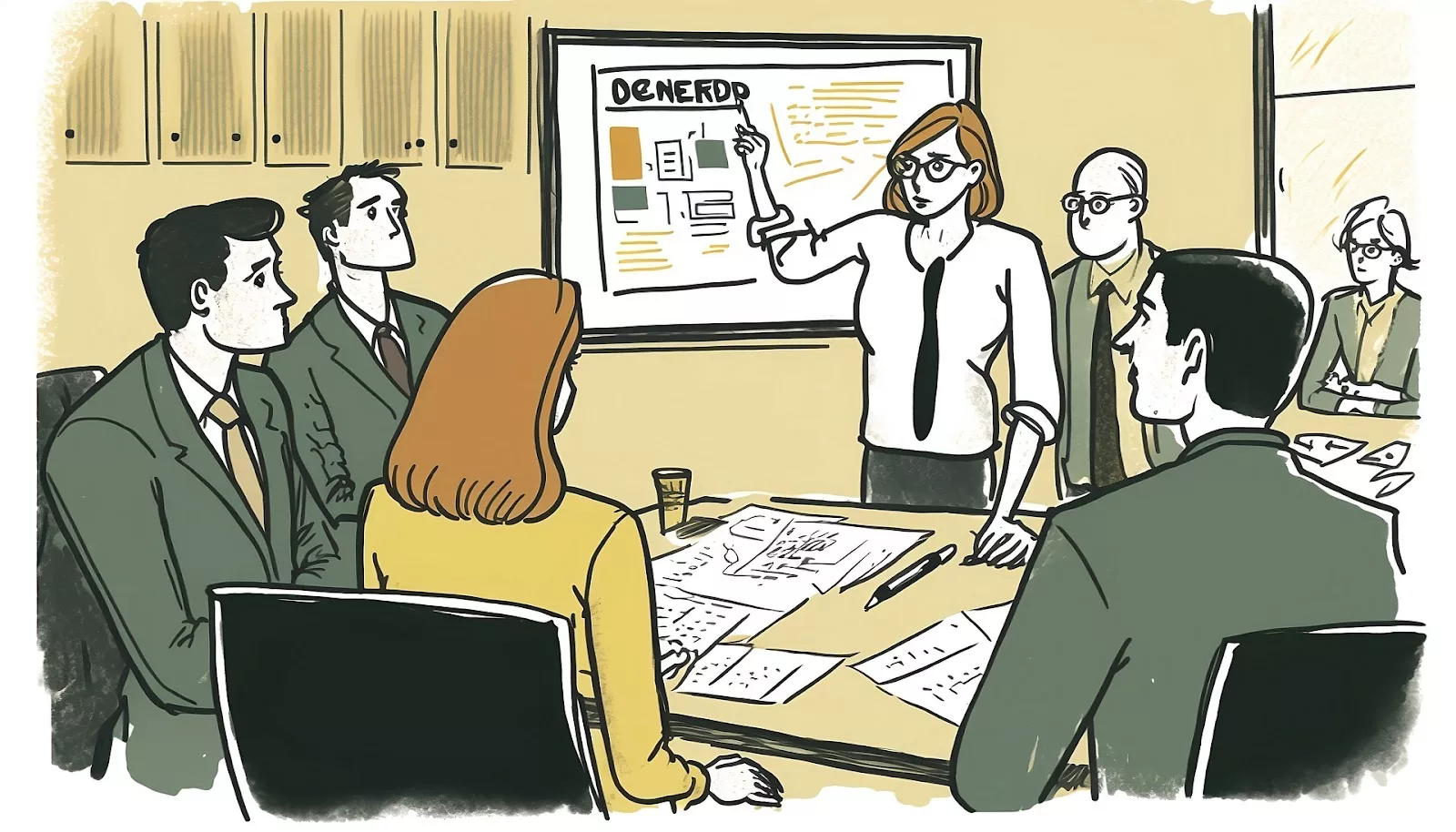An effective workforce is a driving force behind a company’s success. Hence, creating a workforce that is efficient and productive is a task for team leaders.
Effective workforce development programs are essential for any organization, and there needs to be a proper set of plans and strategies for success in workforce development programs. They help enhance employees’ skills, abilities, and knowledge, which impacts the organization’s overall productivity.
However, it can be daunting. You have to consider several factors, such as available resources, goals, objectives, workplace needs, employees’ capabilities, and a few more. To make things easy for you, we have put together a detailed guide for establishing effective workforce development. Read on to learn the things to consider, the challenges to look out for, and essential tips for establishing workforce development programs.
What Is Workforce Development?
Workforce development is an approach to upskilling workers in order to achieve long-term success. Workforce development programs are built to foster prosperity for individual workers and businesses.
Simply put, workforce development means offering employees opportunities to grow, training, and continuing education programs to maximize productivity and shape career pathways. Employers benefit from workforce development by strengthening their talent pipeline, retaining employees, and increasing job satisfaction among employees.
Why is Workforce Development Crucial?
Employees and workers are the assets of any organization. Ignoring the people that build your business is never the right way. Workforce development prioritizes human development, and retention boosts morale and increases competence within the organization. Providing a range of training opportunities broadens the scope of a worker’s contribution to the company. Here are some reasons why it is beneficial for businesses:
Adapt to changing demands:
Today’s business environment is changing rapidly. New and emerging technologies such as Artificial Intelligence (AI) and machine learning are disrupting the entire commerce, finance, and business structures. Hence, there is a need for organizations to adapt to remain competitive quickly. Workforce development programs help your employees by making them aware of new trends, skills, knowledge, and technologies that will meet the growing demands of consumers.
Employee retention:
Making your employees feel supported increases job satisfaction. Workforce development programs show employees that they are an important part of the organization and that the organization is invested in its success.
Employee performance:
An increase in the performance and productivity of employees is good for both career development and business success. Workforce development programs work by enhancing skills and knowledge, which in turn benefits the organization.
Enhanced organizational reputation:
Organizations that care for their employees create a reputation for being good workplaces. This reputation can help attract top talent and improve the overall status.
The Do’s of Workforce Development Programs
Workforce development programs are not simply put in place to educate employees on new skills. Its scope goes beyond that. Companies need to put in the effort and shift their mindset to understand the workforce strategy to truly get the most out of these programs.
The best workforce development programs teach what is needed, apply the teachings when needed, and help move the company forward. To make your workforce development programs a success, you must ensure that:
- All levels, departments, and employees are involved
- It is a part of your company’s culture of continuous learning
- It’s just not a training class; it is about developing the ability to train and learn
- It improves business outcomes
- It focuses on the application
- It includes soft skills
- It is up-to-date
- It is based on tailored online training paths
- Is consistently evaluated
Make sure your workforce development programs make an impact on your organization, and they are not just there as mere educational sessions.
How to Create a Workforce Development Program?
In order to create a successful strategy for a workforce development program, you must first assess the needs of the organization and the goals you want to achieve. The next step should be to look for available resources or tools needed.
One essential thing to remember is to focus on employees’ needs, skills, upcoming business trends, and abilities needed to stay on top of the market. Take into account potential career paths and pinpoint the growth of educational opportunities required for the worker to obtain a promotion. These are a few steps employers can follow to develop a plan that works well:
Identify and set your goals:
First and foremost, get clarity on what you want to accomplish. Define the goals, and considerable skills. Use knowledge, and identify the abilities needed in order to succeed.
Assess the knowledge levels of employees:
Determine what knowledge employees already have, where there is room for improvement, and how to convert their existing knowledge into practice. You can do this by testing or interviewing management and workers.
Find a training partner:
It can be really helpful to have a partner who can customize training and development tools according to your company’s needs. They should offer skill evaluations, flexible access to online resources, and open communication so that you can monitor employee development during the program.
Secure resources:
Never skip this step; determine the budget and resources needed to implement workforce development programs. This may include funding for training materials, trainers, and other resources.
Evaluate and modify:
Monitor the progress of your employees closely. Make sure the program is meeting its objectives. You need to regularly evaluate the program’s effectiveness through interviews, surveys, assessments, or performance metrics. If the results are not satisfactory enough, you can modify and make adjustments.
Improve continuously:
Once you evaluate the program, make improvements. Consider what works well and what does not. Ongoing success comes through regular evaluations and continuous improvements. The base for your workforce development lies in planning, implementing, and evaluating.
How to Create a Strategy for Your Workforce Development Plan?
A workforce development plan will vary from organization to organization. It’s best when it is customized to your team. Get your employees involved, cater to their needs, and create a relevant and engaging strategy. The following steps will help in just doing that:
Company vision:
To keep your team on one path and aligned to the same goal, you must develop a clear company vision. A clear vision will help ensure the workforce development plan is relevant and supports the overall organizational strategy.
Ask for your team’s input:
Businesses flourish when employees and employers work as a unit. Engage employees in the process by asking for their ideas and suggestions. Give them opportunities to take charge of projects, make them feel invested, and motivate them to do their best. Moreover, a sense of ownership and accountability is achieved by involving workers in the planning process.
Feedback is necessary:
Employees need regular feedback to understand how their performance fits with the organization’s aims. Giving constructive criticism also enhances performance and maintains employee engagement. It’sIt’s critical to offer both positive and constructive feedback to let the workers learn and grow in their roles.
Communicate:
It goes without saying; effective communication positively impacts the success of a business. Encourage open communication between leaders, management, employees, and other staff to ensure everyone is working towards the same goal. You can arrange regular check-ins, one-on-one sessions, team meetings, and open-door policies.
Investing in professional development:
Such opportunities can assist in guaranteeing that the staff has the abilities and knowledge required to meet the objectives of the firm. Offering training courses, mentorship possibilities, or other opportunities for professional growth can be a part of your workforce development strategy. Investing in professional development can also aid in improving employee morale and retaining top personnel.
What Are Some Common Mistakes Organizations Make While Implementing Workforce Development Programs?
Some of the most common mistakes employers and companies make while implementing workforce development programs are:
Training at the wrong time:
When it comes to training and development programs, timing is essential. When implementing advanced training, employers and businesses should consider the best time to offer it and ensure that workers have the required background knowledge and abilities.
Training only a specific group:
Training only one certain group or department may create a perception of favoritism and limit opportunities for other employees to grow. Companies must consider developing workforce strategies and programs tailored to the needs of all employees based on their job roles.
Giving up too soon:
Workforce development programs require time and resources to implement effectively. Companies tend to give up too soon before it has a chance to yield results. Patience and consistency is the key when it comes to workforce development programs.
Setting it and forgetting it:
To make sure the program is effective and continues to suit the needs of the firm and its employees, businesses should routinely analyze and monitor it. However, most companies often forget about it after some time. Setting up a development program without constant improvements impacts the business negatively.
Thinking of it as an expense:
Some employers and businesses could see workforce development initiatives as a cost rather than an investment in their workers and the company’s future. This may result in fewer resources being available and decreased program investment. Businesses should prioritize investing in their personnel and take into account the long-term advantages of having a skilled and motivated workforce.
Conclusion:
Workforce development programs are the need of the hour for businesses and organizations. This detailed guide will help you in understanding and implementing workforce development strategies to grow your business and cater to the needs of your employees.


